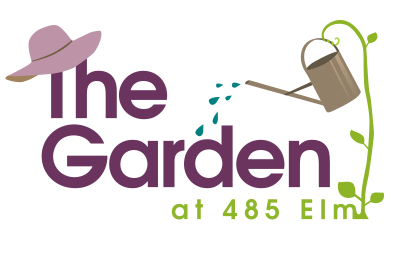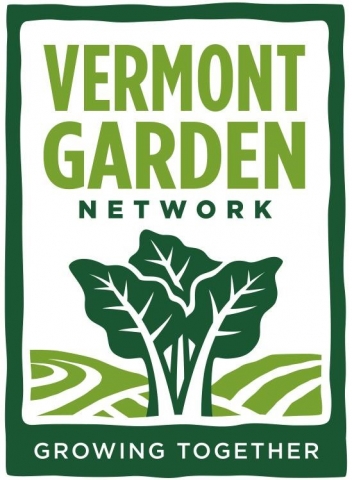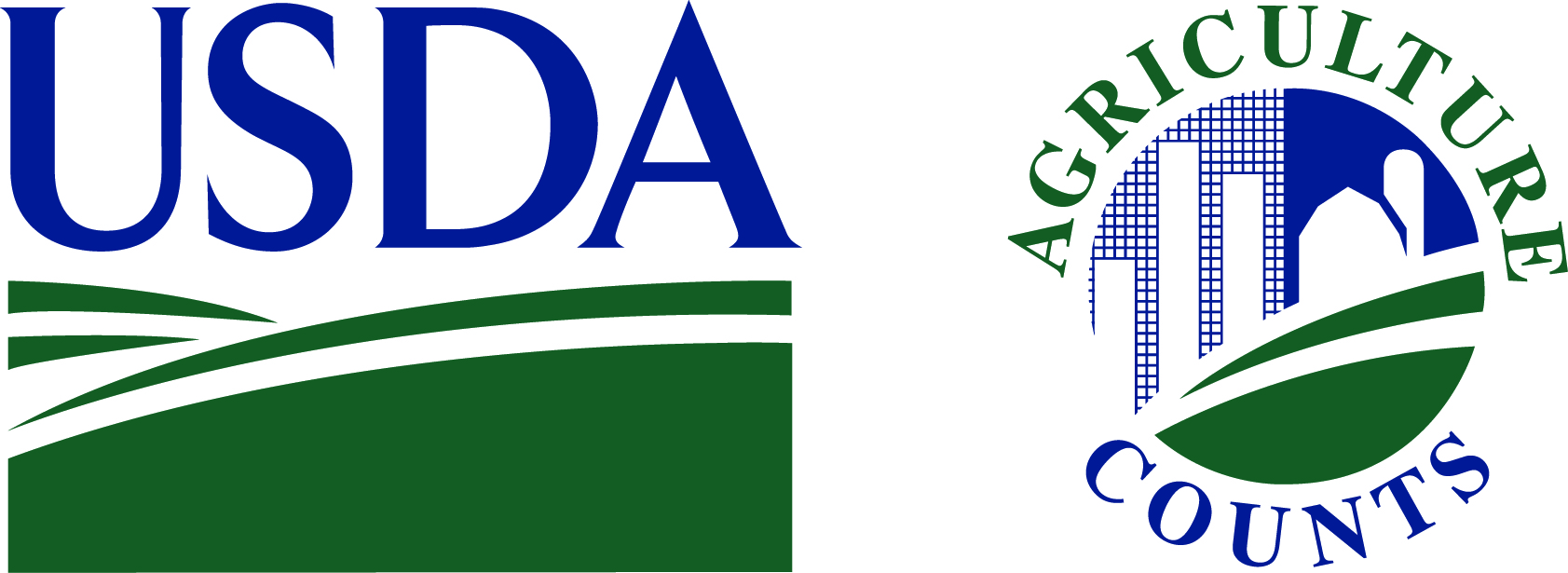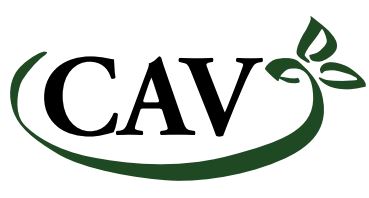Composting is an art and a science. On a perfect fall day, UVM Master Composter students gather at Compostville, the garden’s small-scale community compost system.
This site helps “expose students to the challenges and iterations of community composting,” says Natasha Duarte, leading the day. As director of the Composting Association of Vermont, Natasha works on Vermont compost policy, education, and outreach initiatives with partners statewide and beyond.
Read on to share the day.
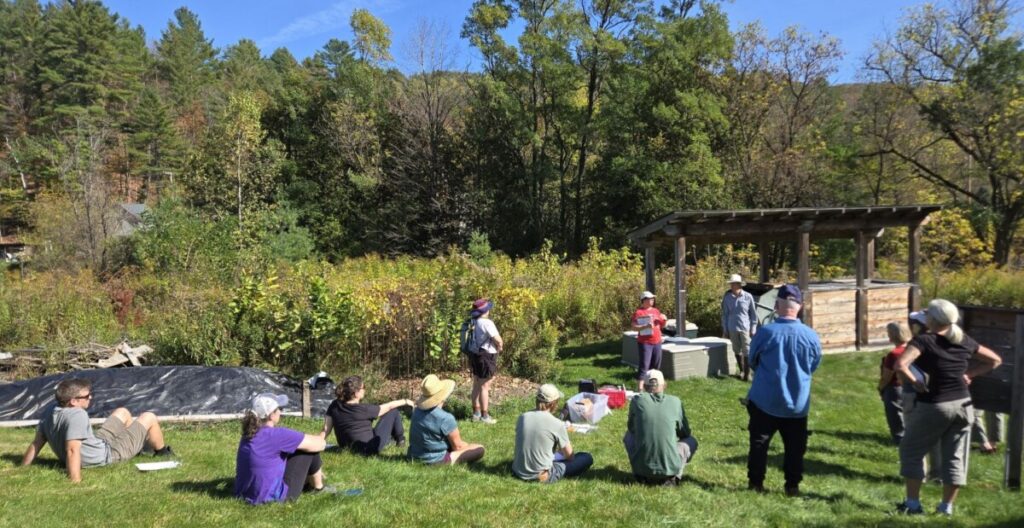
What a beautiful and relevant classroom. At left, covered in black plastic, you can see the downhill (aka most cured) end of the garden waste windrow.
Here’s a quickie show-and-tell about the garden waste windrow.
Brief interlude: As the Windrow Turns: The garden waste windrow is a one-way street. It starts at the north end, the highest point of land it sits on.
- In the garden, gardeners weed, remove old leaves, pull vines and plants that have gone by, and grab crops that didn’t make it.
- They walk it all up to the top of the windrow and pile it on.
- During the season, as these materials break down, gardeners turn the windrow downhill.
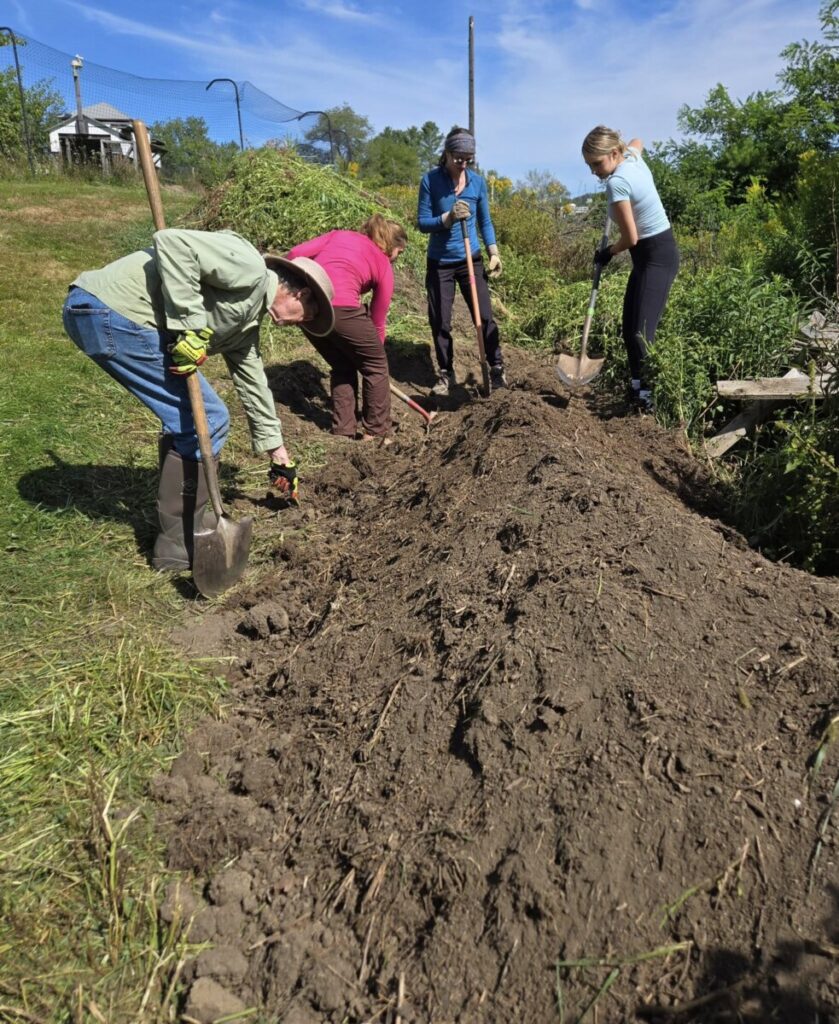
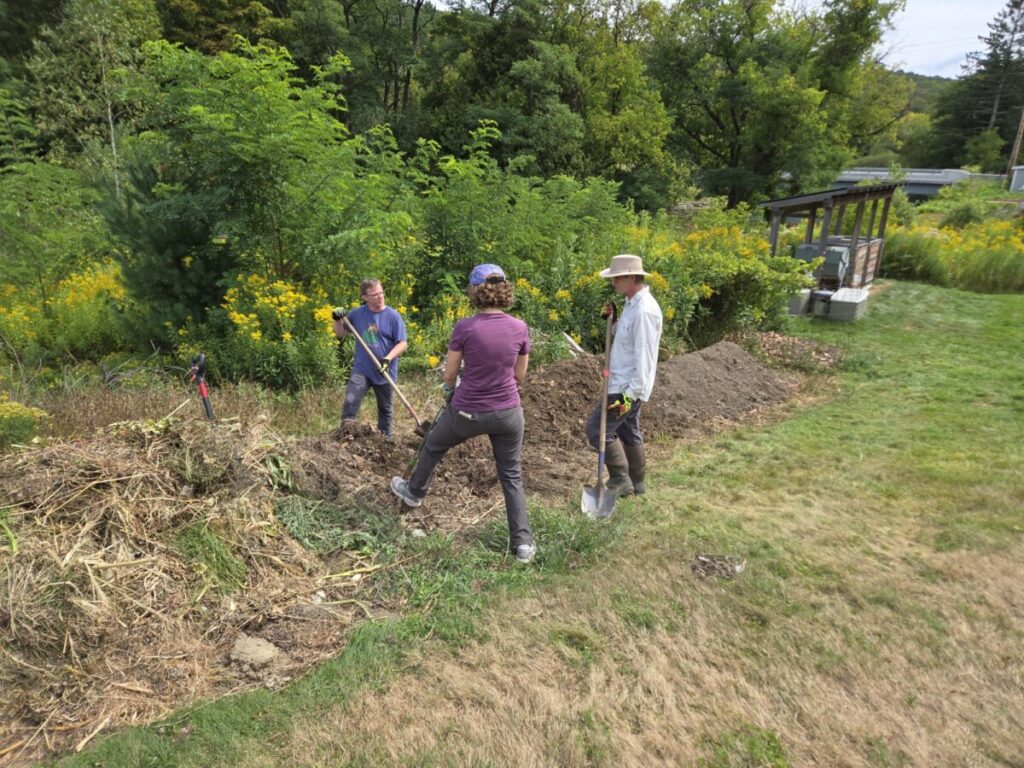
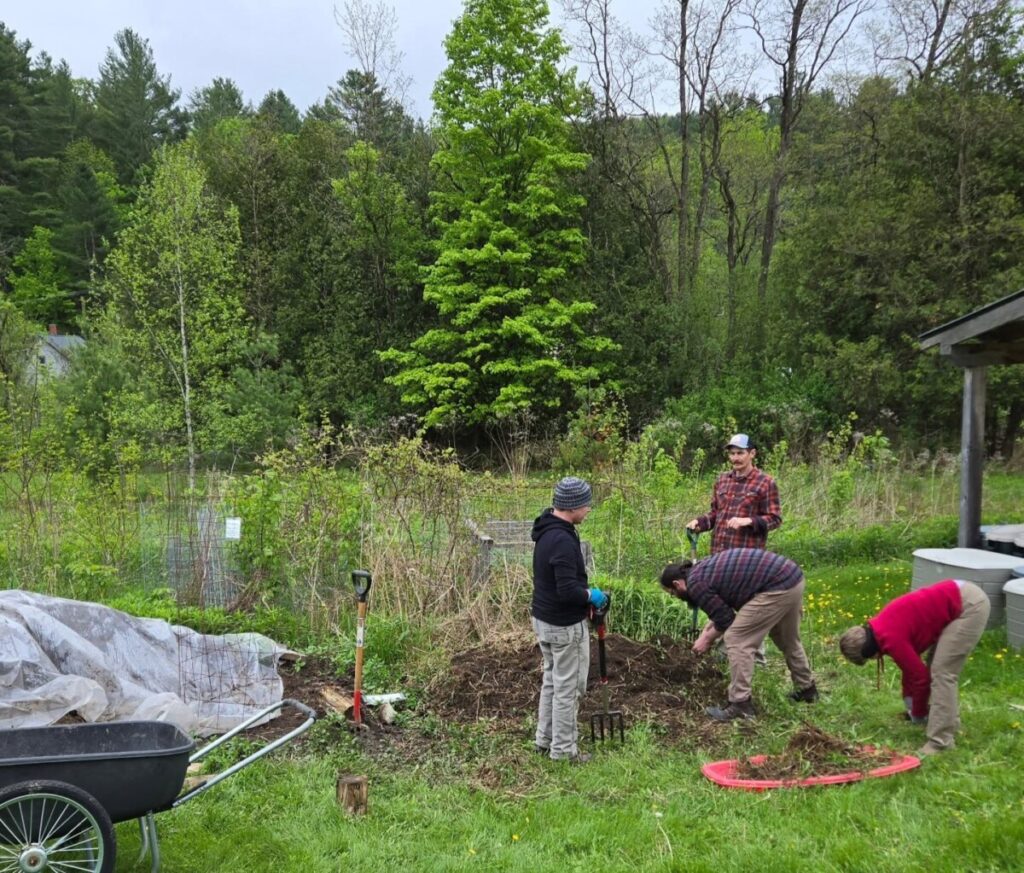
Photos above, from left:
1) In early August, UVM Service TREK Farm and Food team joins Chris in turning the windrow downhill. 2) Later, gardeners turn the top pile onto the middle, then the middle all the way to the bottom. That final pile to the south is covered to help heat it up and break it down. 3) At right, just south of the windrow’s end, gardeners plant potatoes in the rich “downstream” soil the windrow provided.
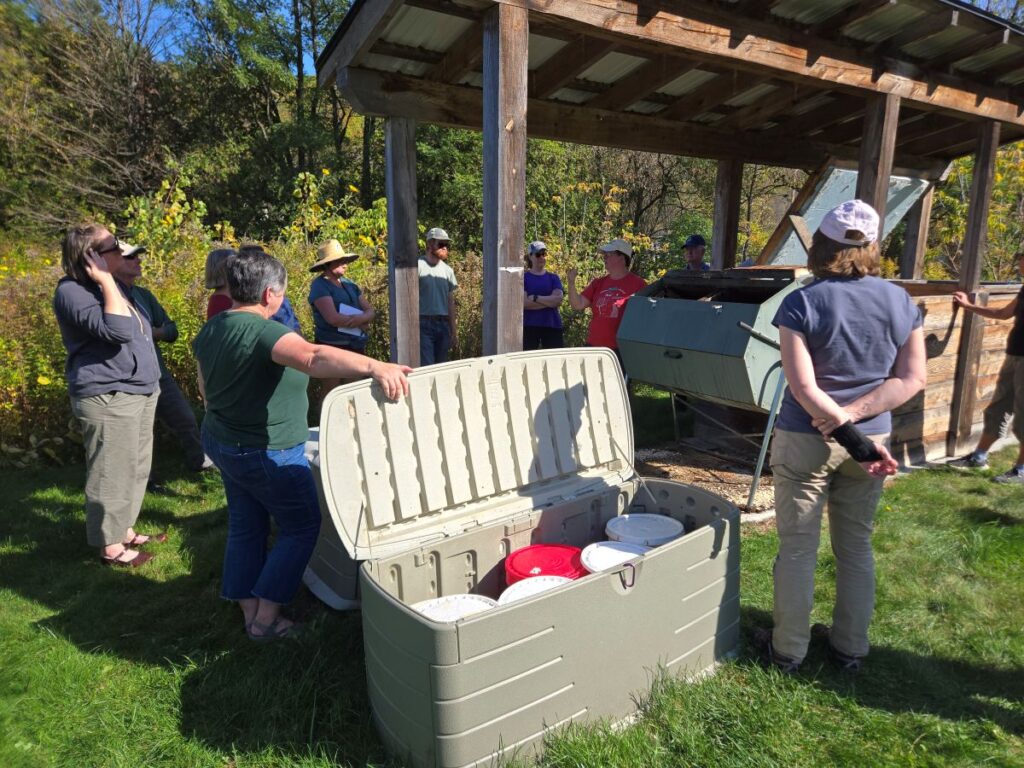
And now, back to the Master Composter training in progress.
The beige bin in the foreground is where everyone’s food scraps go. Gardeners and neighbors dump their kitchen waste into the five-gallon buckets always in this bin, or they leave their own containers, which the steward empties and rinses for gardeners to pick up.
How the steward processes compost once a week:
1) Measures and records the compost temperature
2) Records how many gallons of “greens” (food, grass, other wet stuff) go in
3) Decides whether to add “browns” (leaves, straw, wood shavings) if the contents are too wet or water if too dry
3) Turns the tumbler
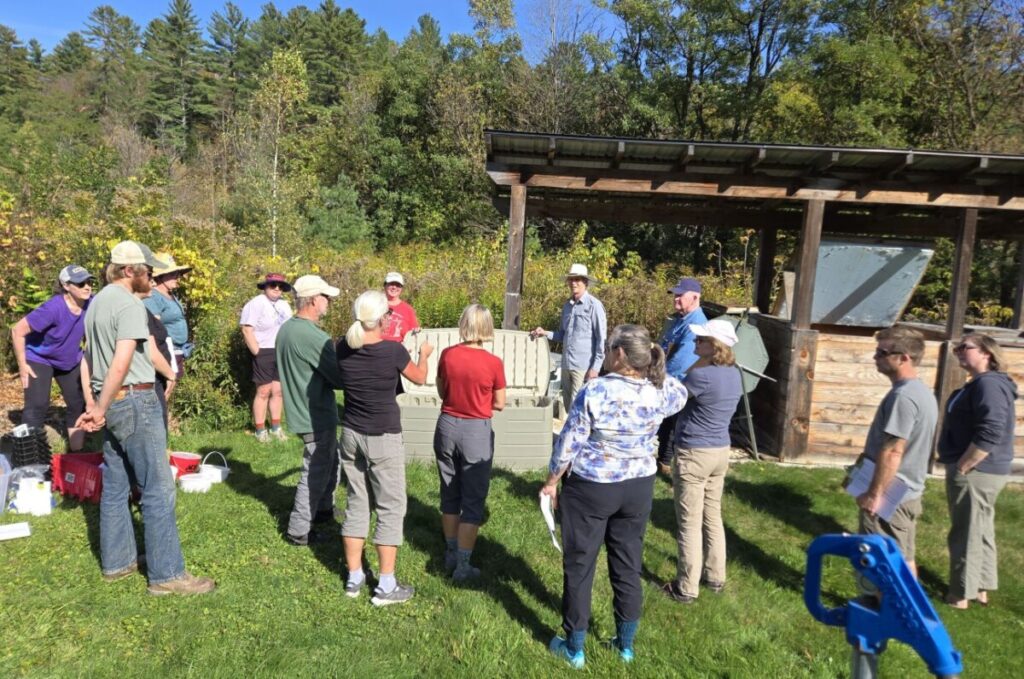
Compostville in action: Master Composter students ask questions and share their own composting experiences on farms, at home, and elsewhere.
The guy in the hat, holding the bin top, is Chris, the lead Compostville steward at the all-volunteer Garden at 485 Elm. Also the garden’s co-manager, Chris completed the Vermont Compost Operator Certification Training, in partnership with the Vermont Agency of Natural Resources. This knowledge boost helps with operating and improving the garden’s small-scale community compost system.
Demonstrating how to turn the Jora tumbler: This is the large Jora, and it’s almost full. This two-chamber tumbler serves as bin 1 in Compostville’s three-bin system. Bin 2 is the wooden bin on the left, abutting bin 3 to its right. After compost has rested in bin 3, it’s turned into the finished (downhill) end of the garden waste windrow, covered with black plastic, and cured to completion for spreading in the garden when crops are planted.
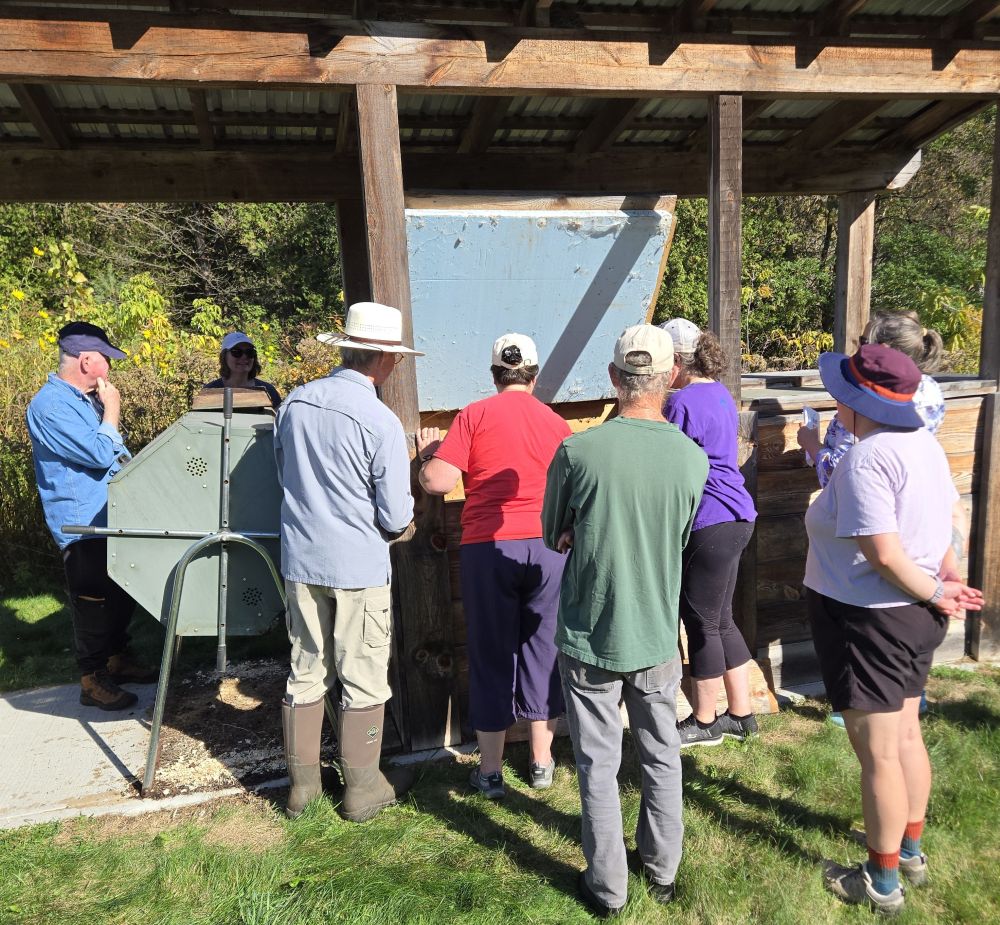
Viewing the compost in bin #2.
Demonstrating how to mix and turn the compost with an auger tool.
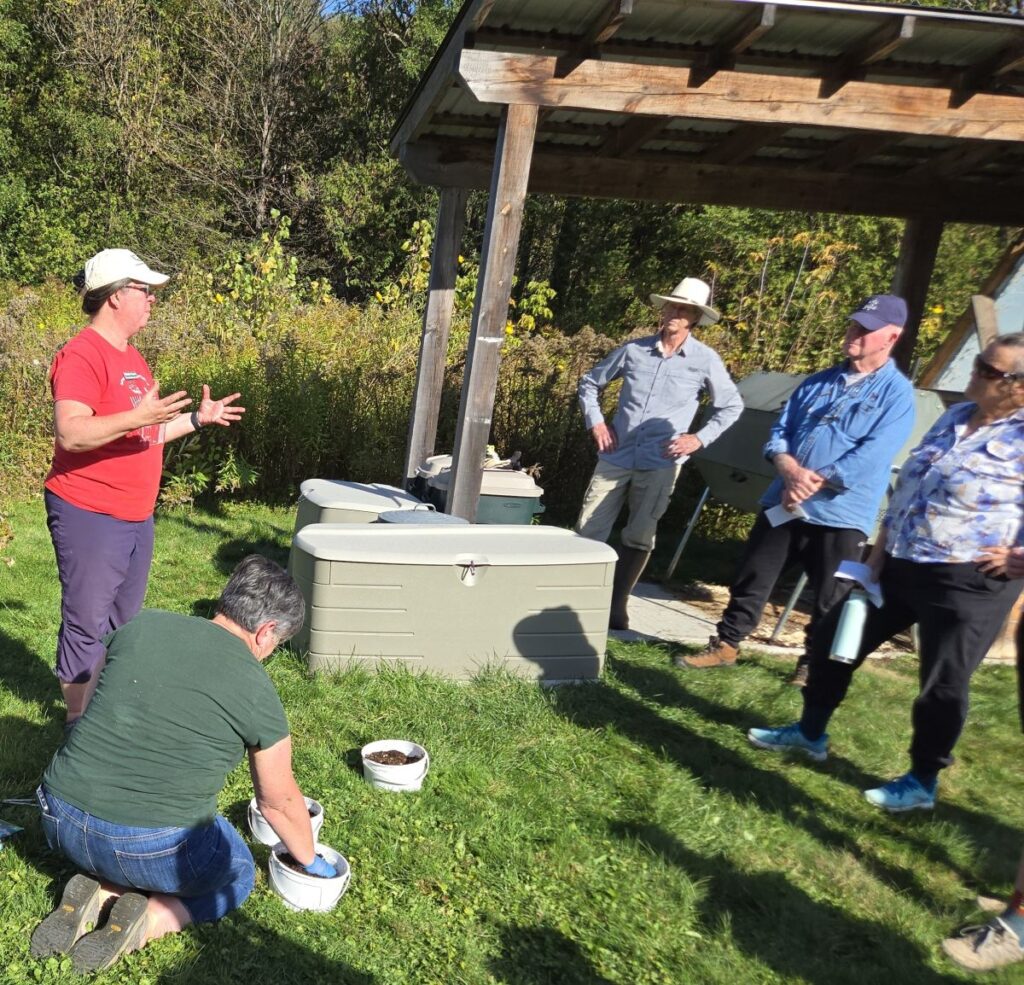
Natasha encourages Master Composter students to get a hands-on feel for the too-wet, too-dry, and just-right compost.

Three types of compost: too wet, too dry, and mmm . . . just right. (Compost samples courtesy of Natasha.)
A demonstration of the three basic ways to tell if your compost is able to break down effectively.
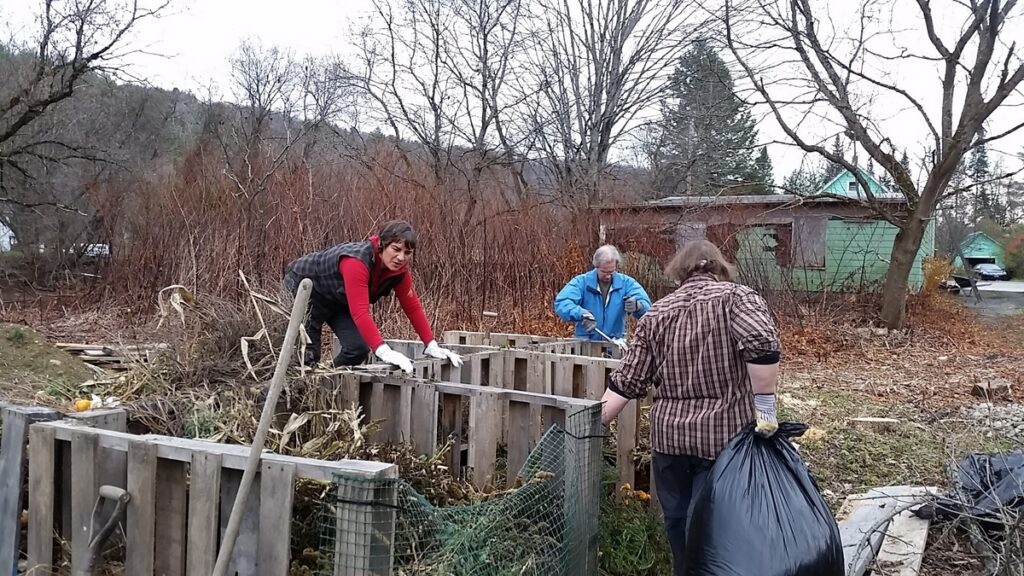
Ancient history! This photo shows Compostville 1.0 in 2015. Click to see the progression from then to today. Learn more about the collaboration that created Compostville 3.0, as shown in this season’s Master Composter training.
Why bother with compost?
- Feeds the garden: Organic material from kitchens and the garden break down into nutritious soil for plants to thrive in.
- Reduces labor and saves money: The garden’s old plants, mulch, dead crops, and yard waste stay right here, with no need to haul them anywhere.
- Eliminates trash problems: Adding food waste to kitchen bins and bring them to a composting system prevents smelly trash. Food odors in trash annoy humans in households. Food in outdoor trash bins attracts (in increasing order of size) maggots, rodents, raccoons, and bears.
- Reduces greenhouse gases: Composting keeps food scraps out of the waste stream. Food in landfills breaks down anaerobically and emits greenhouse gases.
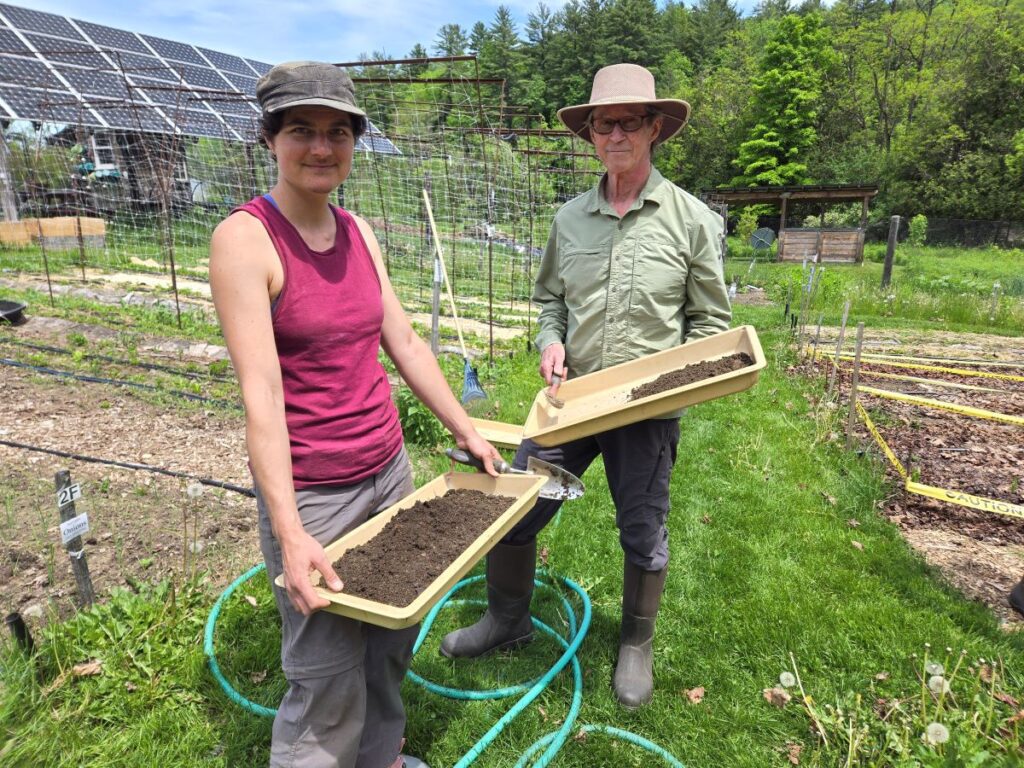
Cradle-to-cradle gardening helps us do well while doing good.
